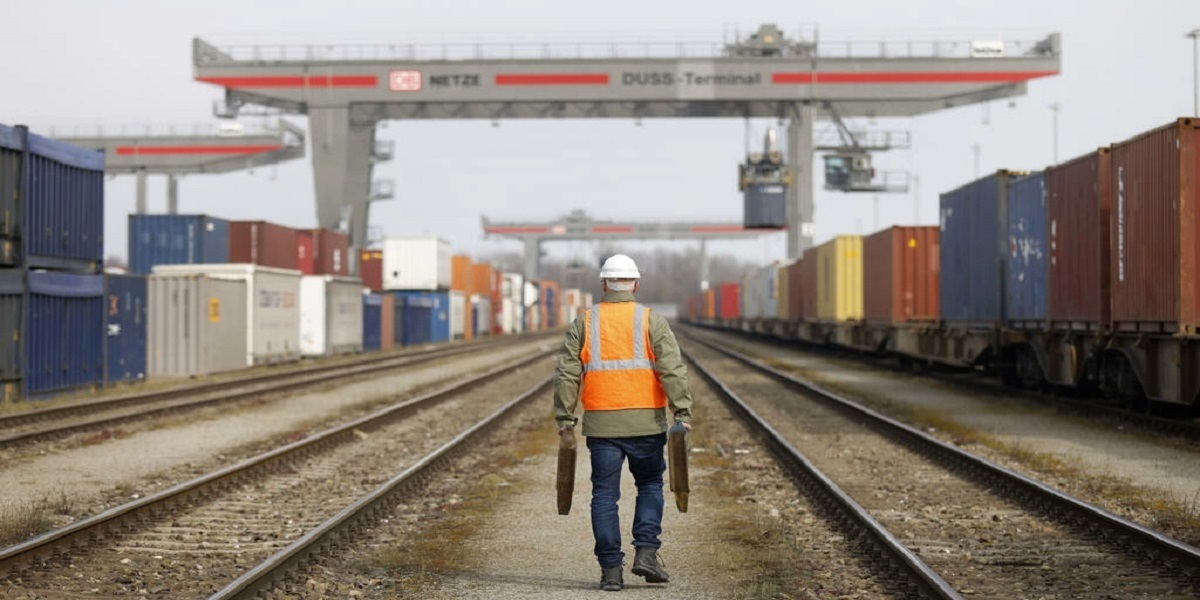The convoy, with its eight automobiles hitched to a brilliant red locomotive, moves slowly out of the centre of Berlin. Ukraine is the last destination, owing to a historic “rail bridge” that transports humanitarian aid to the beleaguered country.
Four days of travel, more than 1,000 kilometers (600 miles), and tonnes of food and other necessities delivered to individuals in need at the end of the line.
The operation of the Deutsche Bahn (DB), the German rail company, echoes the famous Allied airlift — known as the “air bridge” in German — during the Cold War to help the city of Berlin during a Soviet blockade.
“It only took four days” to set up this cooperation with the Polish and Ukrainian railways which now allows this “rail bridge” to operate regularly, explains Sigrid Nikutta, head of DB Cargo, the freight service of the public company.
Every other evening, a convoy leaves the German capital after having collected donations from companies and individuals throughout the country, at dedicated points or directly from manufacturers and supermarket chains.
Pallets of baby food, boxes of sanitary pads and tampons, small electrical appliances, medical equipment, floor mattresses, blankets… the outpouring of generosity is so overwhelming that the containers fill up rapidly.
“Each container is a message to Ukrainians: ‘We aren’t leaving you on your own!’,” Nikutta says.
Among the DB staff, morale is high. Employees take convoys to Poland where they then hand off to local drivers.
The containers must later be unloaded and transferred because the width of the rails in Ukraine is different.
When the train arrives in Ukraine, the national railway takes over.
– ‘Respect’ –
Employees of the Ukrainian national firm have garnered the admiration of their western colleagues for their unwavering commitment to transporting supplies and migrants from one end of the country to the other.
“They have my respect but also my concern because we all know that this is dangerous,” Nikutta says.
However the risks for the “rail bridge” are limited, says DB Cargo spokesman Michael Schmidt.
“We do not transport weapons, no oil”, he stresses, noting that since the start of the Russian offensive, attacks on the Ukrainian rail network have been rare because “the Russians need to keep this infrastructure in good condition”.
All the convoys, sent to various Ukrainian cities and towns, have so far arrived safely, Nikutta says with pride.
She even received a photograph of the arrival of the containers in Kyiv sent by the mayor of the capital, the charismatic ex-boxer Vitali Klitschko.
“Many Ukrainians feel today, after four long weeks of war, what the Berliners felt at the time of the blockade by the Soviets” in 1948-1949, says the Ukrainian ambassador to Germany, Andriy Melnyk, who attended the departure of a convoy this week.
“Without the enormous effort of the Allies at the time, what would this beautiful city have become?” he asks.
“We now need other solid bridges, including political ones, and the most important would be a prospect of EU membership for Ukraine”, says the ambassador, giving the starting signal to the locomotive stamped with the slogan “We stand with Ukraine”.
[embedpost slug = “/britain-is-sending-another-6000-anti-tank-missiles-to-ukraine-following-the-success-of-british-nlaws-in-crushing-putins-troops/”]

















